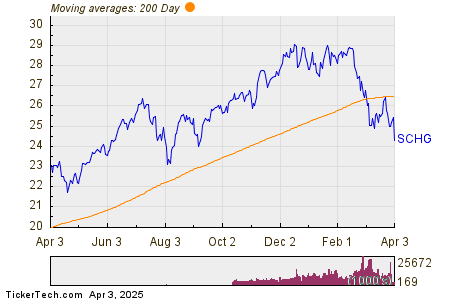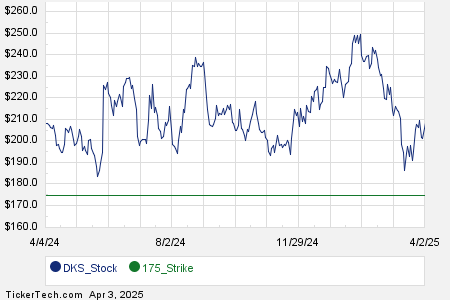Dollar Weakens Amid Trade War Fears and Economic Data
The dollar index (DXY00) is down by -0.26% today, affected by concerns that impending U.S. tariffs could trigger a trade war, threatening economic growth. Additionally, a decline in Treasury note yields has diminished the dollar’s appeal due to reduced interest rate differentials, as the 10-year T-note yield has reached a four-week low. Nonetheless, losses in the dollar are somewhat cushioned after the U.S. ADP employment change for March and factory orders for February exceeded expectations, hinting at a hawkish stance for Federal Reserve policy. Furthermore, the slump in the stock market today has fueled increased liquidity demands for the dollar.
In March, the ADP employment change increased by +155,000, surpassing the anticipated +120,000. Meanwhile, February factory orders rose +0.6% month-over-month, also beating expectations of +0.5% m/m.
The Barchart Brief: Your FREE insider update on the biggest news stories and investing trends, delivered midday.
Looking ahead, market participants are focused on Thursday’s March ISM services index, expected to decrease by -0.5 to 53.0. On Friday, the March nonfarm payrolls are projected to increase by +138,000, and the unemployment rate is expected to remain steady at 4.1%. In addition, March average hourly earnings should hold steady at +0.3% m/m and +4.0% y/y, the same as for February. Also on Friday, Fed Chair Powell is scheduled to speak at the Society for Advancing Business Editing and Writing Conference about the economic outlook.
Currently, the markets estimate a 19% chance of a -25 basis point rate cut following the FOMC meeting on May 6-7.
Euro Gains on Dollar Weakness
The EUR/USD (^EURUSD) has increased by +0.25% today. The euro is experiencing moderate gains due to dollar weakness, which has led to some short covering in euro positions. These gains were further amplified by hawkish remarks from ECB Governing Council member Holzmann, who opposed an interest rate cut by the ECB at its meeting on April 17.
However, concerns over potential trade wars are limiting the euro’s advance. In addition, plummeting German bund yields have negatively impacted the euro’s interest rate differential after the 10-year bund yields fell to a four-week low. In his recent comments, Holzmann emphasized that “as we are neutral and inflation is converging to target, there is no reason to become accommodative.”
At present, swaps indicate a 77% likelihood of a -25 basis point rate cut by the ECB during its policy meeting on April 17.
Yen Benefits from Safe-Haven Demand
Today’s USD/JPY (^USDJPY) sees a slight decline of -0.02%. The yen has strengthened due to heightened safe-haven demand amid trade war fears, while lower Treasury note yields have also supported the yen. Despite these factors, gains in the yen are restricted by falling Japanese government bond yields, as the 10-year JGB yield has also dropped to a four-week low, impacting the yen’s interest rate differentiation.
Precious Metals Surge on Market Conditions
June gold (GCM25) has risen +16.70 (+0.53%), and May silver (SIK25) is up +0.291 (+0.85%). Precious metals are trending Higher today due to the weaker dollar and ongoing trade war concerns, which are driving safe-haven demand ahead of President Trump’s anticipated announcement regarding new reciprocal tariffs later today. Moreover, declining global bond yields further bolster precious metal prices. Escalating geopolitical tensions in the Middle East, particularly as Israel intensifies airstrikes on Gaza and the U.S. conducts strikes on Yemeni Houthi rebels, are also increasing demand for safe-haven assets. Fund buying has also risen, pushing gold prices, as long gold positions in ETFs reached a 1.5-year high on Tuesday. The silver market has the additional concern of possible retaliatory tariffs on U.S. imports from Canada and Mexico, which provide 70% of the nation’s silver supply.
Though precious metals have gained, falling inflation expectations pose a bearish risk for gold, reducing its appeal as an inflation hedge. This is evidenced by the U.S. 10-year breakeven inflation rate, which has dropped to a 1.5-week low today. Comments from ECB’s Holzmann today also added downward pressure on precious metals, as he reiterated opposition to any interest rate cuts this month. Moreover, silver is under pressure amid fears that tariffs could stymie economic growth and decrease industrial metal demand.
On the date of publication,
Rich Asplund
did not have (either directly or indirectly) positions in any of the securities mentioned in this article. All information and data in this article is solely for informational purposes. For more information please view the Barchart Disclosure Policy
here.
More news from Barchart
The views and opinions expressed herein are the views and opinions of the author and do not necessarily reflect those of Nasdaq, Inc.



